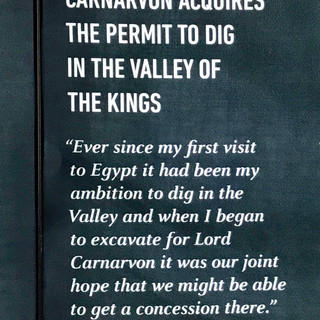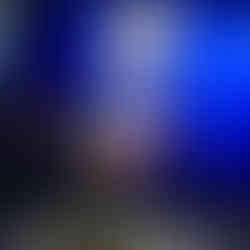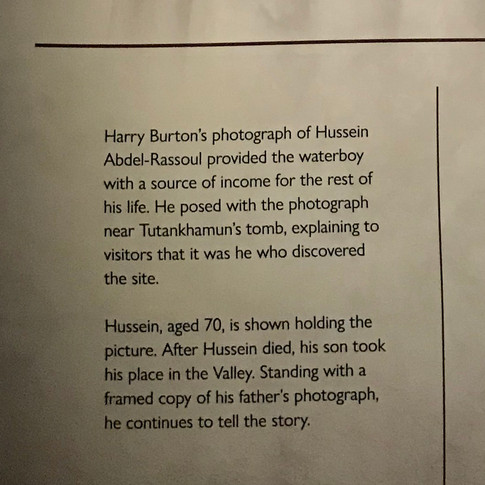FAMILY TOUR - KING TUT EXHIBITION
- Ron Hadfield
- Apr 22, 2018
- 9 min read
"My mother was a teacher, and when she wanted to show me art and literature and science, she'd take me to museums, parks and free exhibitions."
~David Blaine
"When I die, now don't think that I'm a nut,
I don't want no fancy funeral,
just one like old King Tut."
~Steve Martin
The curse on King Tut's tomb - Fact or Fiction?
"Death shall come on swift wings to he who disturbs the peace of a king."
One of my early ideas when I created my Updated Bucket List for Year 77 was to take our family and/or friends on a tour of several of the many unique and special attractions located in the Greater Los Angeles area. The California Science Center is one of these unique facilities, and is located in Exposition Park in downtown Los Angeles. The Science Center is open to the public seven days a week, 362 days per year, with free general admission to its permanent exhibit galleries. This year, beginning March 24th, the Center began presenting a very special exhibit - the World Premiere of King Tut: Treasures of the Golden Pharaoh. We searched for a date that would work for family members and chose to go to the Center on Saturday April 21st. Those who could attend are Jenny, Bekah, Tracy, and Bonnie & I. Unfortunately for us, Heather's family, who actually discovered and recommended this attraction in the first place, decided to attend on a date different than the rest of us.
The California Science Center -

Before discussing the King Tut exhibit, what follows is a little information about this wonderful Science Center. The facility, which opened in February 1998, spans more than 400,000 sq. feet and includes four major exhibit areas. World of Life probes the commonalities of the living world, from the single-celled bacterium to the 100-trillion-celled human being; Creative World examines the ways people employ technology to meet their needs for transportation, communication and structures; and Ecosystems, a major expansion opened in March of 2010, features an unprecedented blend of nearly 400 species of live plants and animals, and hands-on exhibits in 11 immersive environments. World of Life, Creative World, and Ecosystems each have a Discovery Room intended for children 7 years of age and younger. These specially designed spaces make science more approachable for young learners by focusing on hands-on learning experiences.
The fourth major exhibit area, Space Shuttle Endeavour, opened to the public in October 2012. Guests are able to see Endeavour up close and discover some of the science behind this amazing space vehicle. Before entering the Pavilion, guests will be able to enjoy an introductory experience, Endeavour: The California Story , which celebrates Endeavour’s many scientific achievements and its strong connection to California where all the orbiters were built.
The Science Center also hosts international touring exhibits and has an educationally focused IMAX Theater with a capacity to create images of exceptional clarity and impact through the use of the largest film frame in the motion picture industry. The 7-story screen brings to life worlds as small as an atom and as vast as the universe.
OUR FAMILY TOUR:

King Tut's Death Mask
We met at 8:00 am at our home in Monrovia and drove to downtown Los Angeles. Our first reservation was at 9:30 at the IMAX Theater. They suggested arriving early due to probable traffic around the California Science Center and in the parking lots. As it turned out, traffic was light and we were there in time for a cup of coffee before the movie began.
IMAX Theater

The Movie Poster
The IMAX Theater did not disappoint. The screen is huge, but that is just the beginning. The integrated sound system seems perfectly tuned - you can hear a whisper equally well as an explosion. You can actually feel the rumbling base in your chest. IMAX uses Laser Projection and the images on the screen are so sharp, and the colors so vivid, it seems that this is as close to reality as you can get in a theater. The photos below show the girls in front of the IMAX Theater (Bekah, Bonnie, Tracy and Jenny), and also in their seats among the gathering audience in the theater. The screen was so large that I couldn't make it fit in the lens finder of the camera, and of course, no photos were allowed after the movie began anyway.
Click Photo to Enlarge - Use Arrows for Next Photo
The movie is entitled Mysteries of Egypt and stars the legendary actor and native Egyptian Omar Sharif. It feels as if you are in an airplane as you soar over the great pyramids of Giza, rush over the roaring Nile (the longest river on earth), cross the deathly quiet Valley of the Kings, and descend into the shadowy chambers of the sacred tomb of King Tutankhamun ("King Tut"). The action includes the activities of Howard Carter, who, after years and years of searching, finally found King Tut's grave in 1922. This was a major event in archaeology, as this grave was never robbed and therefore in the same condition as it was left in 1339 B.C. We all enjoyed the movie and learned much from the presentation.
King Tut Exhibition
The California Science Center, to celebrate the 100-year anniversary of the discovery of King Tut’s tomb, is presenting the world premiere, which they have entitled, King Tut: Treasures of the Golden Pharaoh – the largest King Tut exhibition ever toured! They claim to have over 150 authentic artifacts from King Tut’s celebrated tomb, many of which the boy king himself used in life and in death, including gold jewelry, gilded wood furniture, and ornate ritual objects. As many as 60 of these objects have never traveled outside of Egypt until now. The photos below are just our group hanging around outside the Science Center.
Click Photo to Enlarge - Use Arrows for Next Photo
The Tour Experience - The Waiting Room
Ticket holders were fed into the exhibition rooms in small groups in an effort to reduce crowding around the exhibits. The rooms were quite dark, and while the exhibits themselves were well-lighted, photography was difficult (no flash allowed). We entered the waiting room in a queue controlled by posts and rope. While waiting for the first exhibit room there were informational posters on the walls giving some initial background on the search for King Tut's tomb.
Photos below show some of this information - from the left:
1st row -The small group waiting to go beyond the waiting room (the remaining photos are all of wall posters giving a little history).
A quote from Giovanni Belzoni, "It is my firm opinion that in the Valley ... there are no more tombs than are now known."
A poster of Flinders Petrie, the Father of English Archaeology.
2nd row -A photo of a quote by Theodore Davis, "I fear the Valley is now exhausted."
A quote by Howard Carter, - Carnarvon Acquires the Permit to dig in the Valley of the Kings - "Ever since my first visit to Egypt it had been my ambition to dig in the Valley and when I began to excavate for Lord Carnarvon it was our joint hope that we might be able to get a concession there." - Howard Carter;
A photo of Howard Carter, "I will state that we had definite hopes of finding the tomb of one particular king and that king was Tutankhamun."
Click Photo to Enlarge - Use Arrows for Next Photo
The Exhibit Rooms - Some History
The first room we entered had a large curved screen where we watched a video. The video itself, and a number of wall posters, included some ancient history about Tutankhamun and his reign. He was born in 1341 BC and died at the age of nineteen in 1323 BC. He was nine years old when he became Pharaoh, and he reigned for about ten years. Historically, King Tut is significant because his reign was near the highest point of Egypt as a world power and because he rejected the radical religious innovations introduced by his predecessor and father. Secondly, his tomb in the Valley of the Kings was discovered by Howard Carter almost completely intact—the most complete ancient Egyptian royal tomb found.
There are no surviving records of King Tut's final days. What caused his death has been the subject of considerable debate and there were several contradicting information posters throughout the exhibition. There is some speculation that King Tut was assassinated, but the consensus is that his death was accidental. The first poster I saw in the exhibition suggested he had been killed by a blow to the head. However, research conducted in 2005 by archaeologists, radiologists, and geneticists, who performed CT scans on the mummy, found that he was not killed by a blow to the head, as previously thought. A CT scan taken in 2005 showed that he had suffered a compound left leg fracture shortly before his death, and that the leg had become infected, possibly leading to his death. DNA analysis conducted in 2010 showed the presence of malaria in his system, leading to the belief that malaria and Köhler disease II combined led to his death.
Prior to the discovery of King Tut's tomb, he was a minor footnote in the tome of Egyptian history. I've always felt this was because he was so young and his reign was so short. However, I was surprised by an informational story in one of the final exhibition rooms saying that there was a move by Egyptians to purposefully remove all evidence of the existence of King Tut after his death. I have researched this on the Internet and can't find any support for this new idea, yet I'm sure the people organizing the Exhibition didn't say that lightly.
The Exhibit Rooms - Search for the Tomb
By the time he discovered Tutankhamen’s tomb in 1922, British archaeologist Howard Carter had been excavating Egyptian antiquities for three decades. At the time of the discovery, which was funded by Lord Carnarvon, archaeologists believed that all the royal tombs in the Valley of the Kings had already been cleared. Excitement about the new tomb—the most intact ever found—quickly spread worldwide. It sparked a renewed public interest in ancient Egypt, for which King Tut's "Death Mask", now in the Egyptian Museum, remains the popular symbol. It took Carter and his team a decade to catalogue and empty the tomb.
Photos from the Video Room, including some of the informational posters, are shown below.
Click Photo to Enlarge - Use Arrows for Next Photo
The Exhibit Rooms - The Artifacts
This King Tut Exhibition at the Science Center is said to be the largest ever to leave Egypt. It features more than 150 real objects from King Tut’s tomb, including 60 that have never been on display outside of Egypt. The breadth of this collection, with three times as many artifacts than ever exhibited previously, is also unprecedented in that it focuses exclusively on King Tut’s tomb. All of the artifacts on display come from Tut’s tomb.
You must see the artifacts in person to enjoy and appreciate them. The photos below do not begin to deliver an understanding of the objects. The lighting does a great job of showing the artifacts, but it's not kind to photographers, and people crowded around the exhibits also make it difficult. But, even under the best of circumstances, photos do not do justice to the items on display.
The artifacts shown below each had an explanatory sign nearby. If you click the photos to enlarge them you can read the information in the photo on the left of each artifact.
Click Photo to Enlarge - Use Arrows for Next Photo
The Exhibit Rooms - More Artifacts
There were many more artifacts than the ones I photographed. And I haven't included information on each of the ones shown below - I just thought it might be interesting to see some of them. Gold is very common among the jewelry and other items. It was said that there were a total of 143 pieces of jewelry within King Tut's mummy wrapping. And gold leaf, as well as ornate painting, was visible on many items, including the pieces of furniture. Alabaster vessels were common.
Click Photo to Enlarge - Use Arrows for Next Photo
Last Exhibit Room - An Interesting Story
Hussein Abdel-Rassoul, a 12 year old boy, made tea for his father and his father's good friend Howard Carter. Carter had asked to see the young boys father as he wanted to be shown the Valley of the Kings. He of course obliged and the excavations began, the young Hussein making tea for them all the while. On November 4th 1922, Hussein found the top of the staircase to King Tut's tomb, 13 feet below the entrance to the tomb. Hussein, his father and Carter went into the tomb and the rest is history.
A photo of Hussein as a boy, wearing the necklace that Howard Carter gave to him as a souvenir from the tomb, provided him with a source of income for the rest of his life. He posed with the photograph near Tutankhamun's tomb, explaining to visitors that it was he who discovered the site. The smaller photo within the photo of the boy, is Hussein at age 70 holding the the photo as he did for visitors.
Click Photo to Enlarge - Use Arrows for Next Photo
Lunch At Paco's
We completed our visit to the King Tut Exhibition a little after noon and decided to end our Family Tour with a lunch near home. We drove to Paco's Mexican Restaurant in Arcadia where we all had a delicious lunch. As we discussed our activities of the morning I think everyone agreed it was a fun, interesting, and educational experience. We would recommend that anyone that has an opportunity to attend the King Tut Exhibition should definitely do so.


















































































Comments